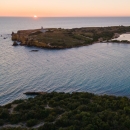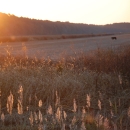Partners for Fish and Wildlife Program/Programa Compañeros para la Vida Silvestre
Established in 1992, the Partners for Fish and Wildlife Program provides financial and technical assistance to private landowners and other eligible entities for voluntary, on-the-ground habitat restoration and conservation projects.
What is the Partners for Fish and Wildlife Program?
This program focuses on the enhancement, restoration and protection of ecologically important habitats for the benefit of, listed threatened, endangered, migratory, and/or at-risk species. The program recognizes the need to balance residential, tourist, commercial, agriculture, and industrial needs with conservation of important habitats and species and work closely with other partners (federal, territorial, non-governmental, private) on restoration projects.
What benefits does program offer?
By participating in this program, you work toward conservation of natural resources and help conserve the Caribbean biodiversity. In addition, as an incentive, the Service will offer technical and financial assistance. Technical assistance is provided for the design and the implementation of conservation practices. Financial assistance is possible through in-cash sharing or fund-matching. Generally, the cost includes labor and materials and is shared between the landowner and the Service. However, the landowner’s contribution is flexible. The collaboration of the participant (s), can be as an in-cash or in-kind (non-monetary) contribution, and labor and materials qualify. For this program, the allocation of funds is limited up to $25,000 by cooperative or landowner agreement, and the restored habitat must remain in place without interference for a minimum period of 10 years.
Who is eligible to participate?
Any person or private entity interested in improving and protecting wildlife habitats on their property, and committed to maintain the conservation practices and restored areas for a minimum period of 10 years. Participants include:
- Private landowners (farmers and ranchers, among others)
- Corporations
- Educational Institutions
- Non-governmental conservation organizations
- Private groups
- Federal, commonwealth, state, and local agencies may participate by providing technical and financial assistance (incentives), but their lands do not qualify to participate in the program.
This program also offers talks and workshops aimed at students and teachers, and collaborates in educational projects such as the well-known Schoolyard Habitat Program.
What kind of conservation activities could be promoted by the Program?
Program participants establish a cooperative agreement with the Service, which includes a Conservation/Restoration Plan describing the most appropriate conservation practices for restoring or enhancing habitats. Common practices include:
- Shade-grown coffee agro-ecosystem
- Forest enhancement by planting native species and invasive species invasive species
An invasive species is any plant or animal that has spread or been introduced into a new area where they are, or could, cause harm to the environment, economy, or human, animal, or plant health. Their unwelcome presence can destroy ecosystems and cost millions of dollars.
Learn more about invasive species control - Reforestation of open areas with native trees that provide food and shelter for wildlife
- Riparian restoration (e.g. sediment and erosion control, vegetation buffers)
- Listed and at-risk plant species conservation
- Wetland restoration


